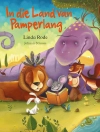In Maurice Maeterlinck’s enchanting play, ‘The Blue Bird, ‘ readers are drawn into a whimsical yet profound exploration of happiness and the human spirit. Written in a symbolist style, the narrative follows Tyltyl and Mytyl, two children on a quest to find the eponymous Blue Bird, a symbol of bliss. Through vivid imagery and allegorical characters, Maeterlinck constructs a rich tapestry of dreams and spiritual awakening, urging the audience to contemplate the essence of true contentment amidst life’s ephemeral pleasures. The play, first staged in 1908, emerges as a beacon of early 20th-century literature, resonating with themes of introspection and the transformative power of imagination. Maurice Maeterlinck, a Belgian playwright, poet, and essayist, was deeply influenced by the philosophical currents of his time, particularly those concerning existentialism and mysticism. His illustrious career, marked by a Nobel Prize in Literature in 1911, showcases his quest to uncover deeper truths behind existence and interpersonal connections. Inspired by his own introspective nature and affinity for the metaphysical, Maeterlinck sought to illuminate the path to enlightenment through accessible yet profound narratives like ‘The Blue Bird.’ This timeless piece is highly recommended for readers who seek a poignant exploration of life’s most elusive pursuit: happiness. Maeterlinck’s poetic prose and thought-provoking themes provide a rewarding experience that transcends cultural and temporal boundaries, making ‘The Blue Bird’ a must-read for anyone interested in the intricacies of human emotion and the search for meaning.
लेखक के बारे में
Maurice Maeterlinck, born on August 29, 1862, in Ghent, Belgium, was a prominent playwright, poet, and essayist of the Symbolist movement. He penned his literary works predominantly in French, and his influence extended well beyond the boundaries of his native Belgium. Maeterlinck’s early education in a Jesuit school laid the foundation for his philosophical inquiries, which permeated his writing later in life. Notable for his esoteric and allegorical style, Maeterlinck’s career was marked by an exploration of themes such as mysticism, fate, and the human condition. In 1911, he was awarded the Nobel Prize in Literature, with ‘The Blue Bird’ (‘L’Oiseau bleu’) often highlighted as one of his most cherished works. This play, rich in symbolism and magical elements, is a fairy tale that explores the themes of happiness and the search for meaning. Maeterlinck’s literary style is characterized by a poetic and often ethereal use of language, with a focus on introspective and dream-like narratives. His body of work, which includes plays, poems, and essays, continues to be studied for its contribution to the Symbolist movement and its influence on early 20th-century literature. Maeterlinck passed away on May 6, 1949, leaving behind a legacy as a profound thinker and a key literary figure of his time.












